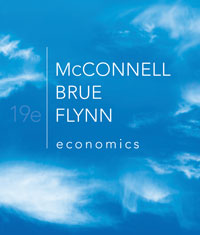1 A) Lena will increase her profits by selling her quota to Ole B) Ole will increase his profits by selling his quota to Lena C) Both Lena and Ole would like to sell their quotas on the open market D) Both Lena and Ole would like to buy an additional 1000-ton quota on the open market 2 A) increased since 1990, as measured by the extraction rates of ore and crude oil B) increased since 1990, as measured by the increase in real GDP C) decreased since 1990, as measured by the commodity price index D) leveled off since 1990, as measured by per capita trash generation 3 A) The index has fallen because the supply of commodities has increased faster than the demand for them B) The index has fallen because the demand for commodities has increased faster than the supply of them C) The index has risen because the supply of commodities has fallen while the demand has risen D) The index has fallen because the demand for commodities has fallen while the supply has risen 4 A) increase the current user cost of coal and increase the current rate of extraction B) increase the current user cost of coal and decrease the current rate of extraction C) decrease the current user cost of coal and increase the current rate of extraction D) decrease the current user cost of coal and decrease the current rate of extraction 5 A) power plants with the lowest operating costs per kilowatt hour tend to have the highest fixed construction costs B) federal law limits mixing generator technologies in a given utility district C) the prices of various energy sources is highly variable over the year, but the demand for them is stable D) marginal cost exceeds average cost for all reasonable output levels 6 A) mine the copper next year, since the market price may go up even further B) mine the copper next year, since $4.10 exceeds $4.00 C) mine the copper today, since the present value of $4.10 received next year exceeds $4.00 D) mine the copper today, since $4.00 today could be invested and return $4.20 next year 7 <a onClick="window.open('/olcweb/cgi/pluginpop.cgi?it=jpg::::/sites/dl/free/0217511447/883743/ch15_q7.jpg','popWin', 'width=NaN,height=NaN,resizable,scrollbars');" href="#"><img valign="absmiddle" height="16" width="16" border="0" src="/olcweb/styles/shared/linkicons/image.gif"> (15.0K)</a> A) none of this resource, as the total cost of the resource exceeds $10 B) all of this resource, as the user cost is only $3, which is less than the market price C) Q0 units of the resource, as the total cost of extracting units in excess of this amount exceeds the market price D) Q1 units of the resource, as the user cost concept only applies to renewable resources 8 <a onClick="window.open('/olcweb/cgi/pluginpop.cgi?it=jpg::::/sites/dl/free/0217511447/883743/ch15_q8.jpg','popWin', 'width=NaN,height=NaN,resizable,scrollbars');" href="#"><img valign="absmiddle" height="16" width="16" border="0" src="/olcweb/styles/shared/linkicons/image.gif"> (11.0K)</a> A) between 0 and T0 B) between T0 and T1 C) between T1 and T2 D) after T2 9 A) its user cost will rise and it will decrease its current rate of extraction B) its user cost will fall and it will decrease its current rate of extraction C) its user cost will rise and it will increase its current rate of extraction D) its user cost will fall and it will increase its current rate of extraction 10 A) some sources of energy, such as biodiesel, are more costly to produce than other sources, such as tar sands. B) the higher the price of oil, the lower the amount demanded C) increases in the price of energy increase the supply of energy D) oil exporting countries regulate the price of oil to match consumer willingness to pay





